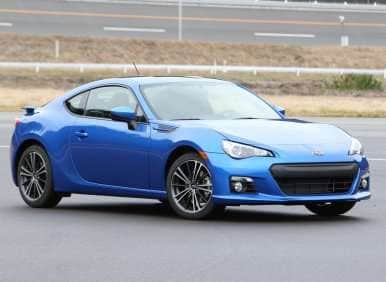Recent Articles
Popular Makes
Body Types
Best Four-Cylinder Sports Cars
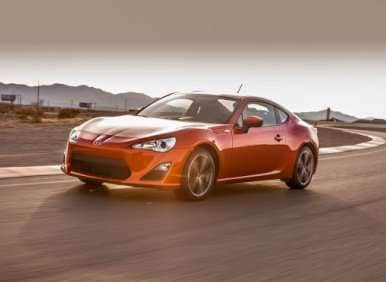
The list of best four-cylinder sports cars for 2012 contains a number of choices. Until recently however, the amount of cars powered by a 4-cylinder engine was low.
With the advent of combining direct fuel injection and turbocharging, many manufacturers are revisiting the four-cylinder engine. Building engines with this configuration enables combining the potential output of a normally aspirated six-cylinder powerplant with the fuel economy of a four-cylinder mill.
This bodes well for sports cars for yet another reason—weight reduction. Those four-cylinder turbo engines are almost always lighter than their six-cylinder counterparts. This enables the four-cylinder sports cars to exhibit more agility since they carry less weight in their noses (all of the cars on the list are front-engine models).
That high-end automakers like BMW and Mercedes-Benz have warmly embraced this strategy bodes well for the coming years. With such dynamic results from their first efforts in this regard, the future can only be brighter for the four-cylinder sports car.
Best Four-Cylinder Sports Cars: Audi TT
Available as a two-seat hatchback coupe or a full roadster, the Audi TT is one of the most stylish four-cylinder equipped cars on the road. For 2012, its 2.0-liter turbocharged four-cylinder engine produces 211 horsepower, but more importantly, 258 ft.-lbs. of torque. That high torque figure makes the TT quite quick off the line. Meanwhile, its six-speed dual-clutch automated manual transmission and Quattro all-wheel drive add an extra edge of sportiness to the way the Audi drives. Combine that with its unique exterior styling and its high quality and distinctive interior and you get one of the best four-cylinder sports cars for 2012.
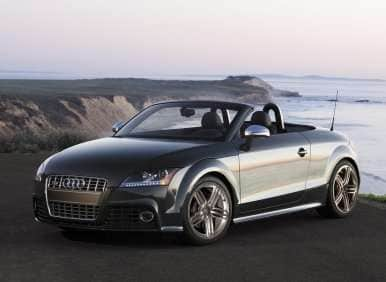
Best Four-Cylinder Sports Cars: BMW Z4 sDrive28i
BMW’s only two-seat sports car is known primarily for housing those silky-smooth BMW inline six-cylinder engines. However, for 2012, BMW’s engineers also fitted a 240-horsepower turbocharged inline 2.5-liter four-cylinder engine to its folding hardtop roadster. And, in so doing, earned the Z4 a spot on the list of the best four-cylinder sports cars for 2012. Installed in the 2012 BMW Z4 sDrive28i, the engine actually produces more torque than the inline six it replaced as the Z4’s base engine. This is possible thanks to the miracle of combining direct fuel injection and turbocharging with variable valve timing. Because the engine is lighter than the six-cylinder it supplanted, the rear-drive Z4 handles better with it too. By the way, the first six-cylinder BMW M3 to come to North America also made—yes, that’s correct—240 horsepower.
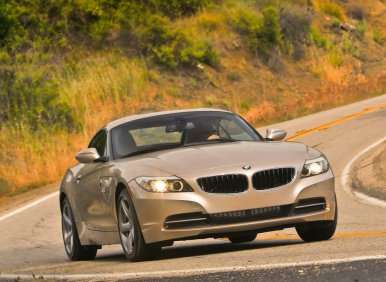
Best Four-Cylinder Sports Cars: Mazda MX-5
The four-cylinder sports car that catalyzed the return of the small lightweight sports car, Mazda’s MX-5 Miata can be justifiably considered the crown jewel of any list of four-cylinder sports cars. Available with a folding hardtop, or the traditional soft top, the Miata delivers a connection to the road few cars can replicate. This is largely why the Mazda MX-5 has been a beloved rear-drive four-cylinder sports car since its introduction in 1989 as a 1990 model. The current generation of the car is powered by a 2.0-liter, 167-horsepower inline four, generating 140 ft.-lbs. of torque. The rear drive sportster can be equipped with the buyer’s choice of an automatic or a manual transmission. It should be noted however, going with the automatic drops the horsepower output to 158 (torque is unchanged).

Best Four-Cylinder Sports Cars: Mercedes-Benz SLK 250
The first contemporary automobile to employ a folding hardtop, the Mercedes-Benz SLK came about largely as a response to the meteoric popularity of the Mazda MX-5. The 2012 Mercedes-Benz SLK 250 earns its spot on the list of four-cylinder sports cars for 2012, thanks to its turbocharged 1.8-liter inline four. Producing 201 horsepower and 229 ft.-lbs. of torque, the engine is paired with your choice of a six-speed manual transmission, or a seven-speed automatic with paddle shifters on the steering wheel. The SLK’s powertrain feeds the rear wheels. The SLK 250’s folding hardtop also offers the option of MBZ’s “Magic Sky Control”. At the touch of a button, the roof can darken to restrict the amount of sunlight streaming into the car—or alternatively lighten to admit more
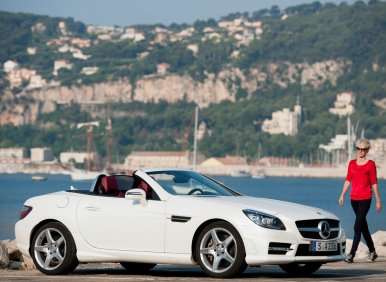
Best Four-Cylinder Sports Cars: MINI Cooper Coupe/Roadster
Available in a variety of flavors, including both coupe and convertible formats, the base MINI Cooper Coupe and Roadster lands on our list of four-cylinder sports cars because it is offered with a trio of four-cylinder powerplants. The Base model is equipped with a 121-horsepower, normally aspirated, 1.6-liter inline four-cylinder engine producing 144 ft.-lbs. of torque. The next model up from there is fitted with a 181-horsepower turbocharged version of the engine for the MINI Cooper Coupe or Roadster S, which makes 177 ft.-lbs. of torque. For the full-on ultimate John Cooper Works version of the little bulldog-looking two-seater, MINI’s product planners specified a 208-horsepower turbocharged four, delivering 192 ft.-lbs. of torque. A six-speed manual transmission is standard with each engine choice for the front-drive MINI models, while a six-speed automatic is optional.
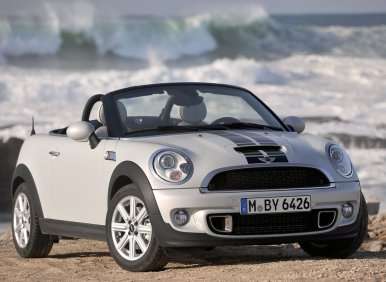
Best Four-Cylinder Sports Cars: Scion FR-S
The Scion FR-S (technically a 2013 model) marks a return to the elemental rear-drive sports cars of yore. Containing just enough of the contemporary comfort and convenience features to be livable (Bluetooth handsfree telephony and audio streaming, power windows, and A/C), in an agile and lightweight package, the Scion FR-S is destined to be a richly–loved four-cylinder sports car —coveted even. Employing a horizontally opposed 2.0-liter four-cylinder engine, the Scion FR-S has 200 horsepower and 151 ft.-lbs. of torque at its disposal. And while those numbers might sound a bit paltry compared to many of the other cars on this list of best four-cylinder sports cars for 2012, it is important to recognize the FR-S is also lighter than every other car on this list. Buyers get a choice of a six-speed manual, or an excellent six-speed automatic transmission with steering wheel mounted paddle shifters.
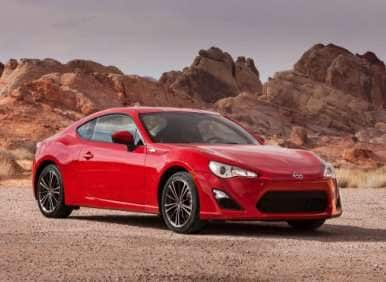
Best Four-Cylinder Sports Cars: Subaru BRZ
Co-developed with the Scion FR-S, rather than taking the basic, no frills approach of the Scion, the Subaru product strategy skews more toward the luxury side of the equation— with an optional navigation system and leather upholstery. The suspension tuning is a bit different on the Subaru as well, giving it a bit sharper turn-in than the Toyota-developed model. Otherwise, horsepower and drivetrain configurations are identical. In fact, the horizontally opposed, 200-horsepower/151 ft.-lb. 2.0-liter four-cylinder engine is a Subaru design. And, like the Scion, the Subaru BRZ’s power is sent to the rear wheels through either a six-speed manual transmission (which is standard equipment), or an optional six-speed automatic with steering-wheel-mounted paddle shifters.
